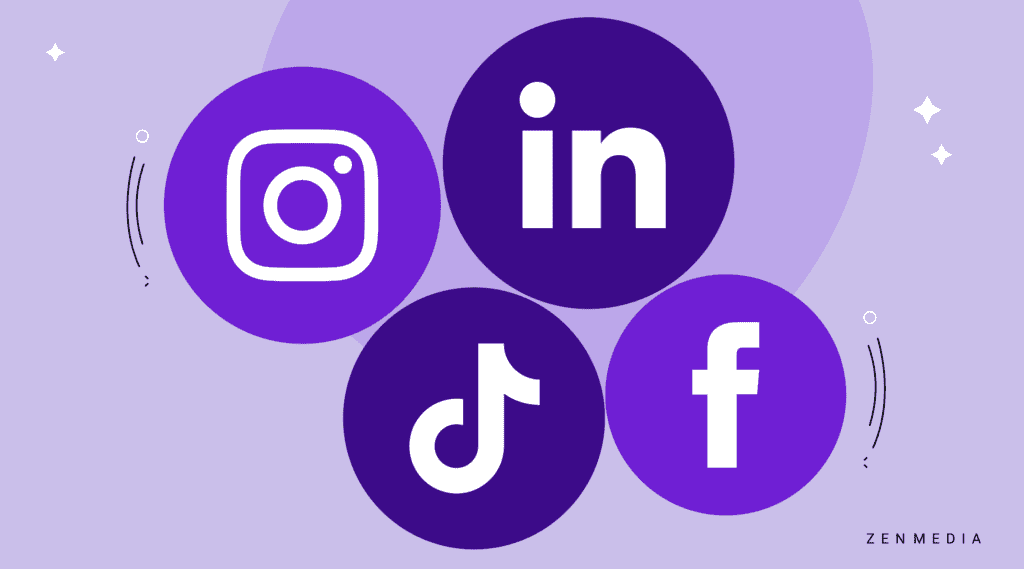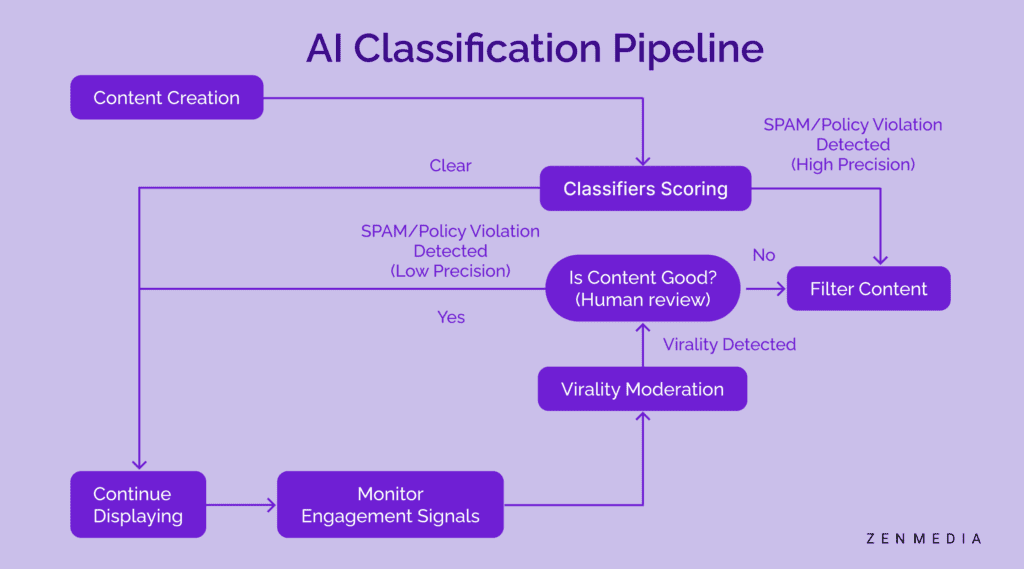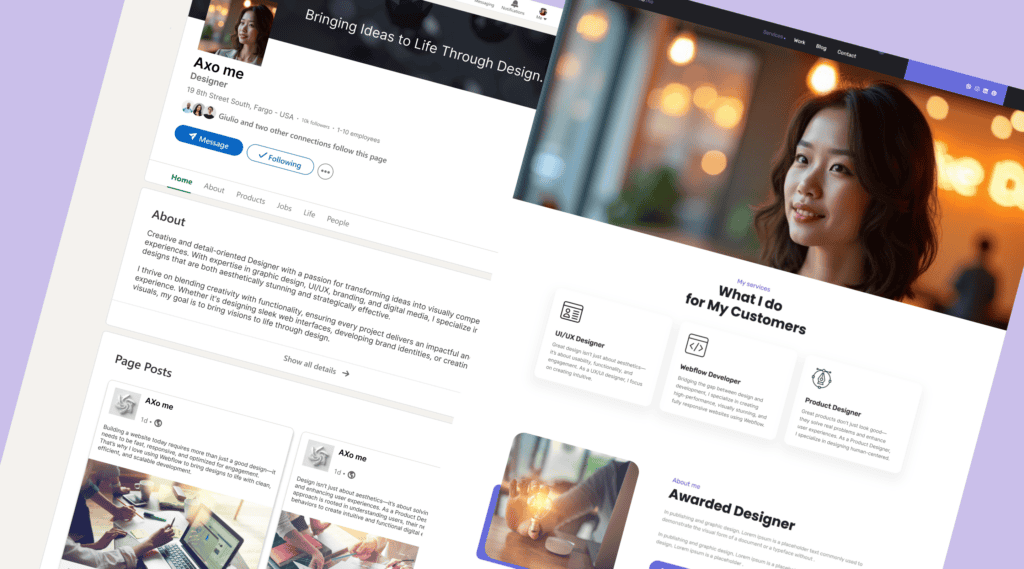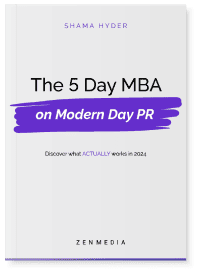You’re scrolling through LinkedIn practically on autopilot, and then bam! A post makes you hit the brakes. Someone’s perspective suddenly shifts how you think about your industry, and before you know it, you’re diving deep into their content, newsletter, and latest podcast appearance. That’s thought leadership in action—and in 2025, this type of content marketing is a must-have for exponential business and career growth. Let’s start with some statistics that demonstrate exactly how thought leadership dominates:
The Revenue-Driving Power of Thought Leadership
Across sectors—from services to consumer goods, finance, healthcare, industrial goods, tech, and more—organizations with 1% more followers on LinkedIn also have 0.5% higher revenue on average. That’s the kind of impact no business can afford to ignore. And recent data from the 2024 Edelman-LinkedIn B2B Thought Leadership Impact Report reveals that 52% of decision-makers and 54% of C-suite executives spend an hour or more per week reading thought leadership content.
The same report drops a few more bombs: more than 75% of decision-makers and C-suite executives say that a piece of thought leadership content has led them to research a product or service they were not previously considering. And 73% of decision-makers say that an organization’s thought leadership content is a more trustworthy source for assessing a company’s capabilities and competencies than its marketing materials and product sheets.
And I’ll stop with the numbers after this, I swear, but 7 in 10 decision-makers also reported they think more positively about organizations that consistently produce high-quality thought leadership. So, let’s let all that sink in: thought leadership doesn’t just build your reputation. In 2025, it’s driving real business outcomes.
The Days of Faceless Corporations are Over
Here’s the thing about trust in 2025: we’re done with faceless corporations and slick sales pitches. We trust people—their experiences, their insights, and most importantly, their authentic voices. Whether you’re a CEO seeking to position your company at the forefront of innovation or a marketing leader aiming to build personal brand equity, thought leadership is your bridge to meaningful connections and opportunities.
Today, there are multiple platforms you can use to amplify your voice and quality content. LinkedIn remains the powerhouse for B2B thought leadership with more than 1 billion members worldwide, while platforms like TikTok and Instagram dominate the B2C space. But it’s not just about where you share—it’s about how you share. Short-form vertical video is the format of choice across all platforms, demanding that thought leaders adapt their content strategy accordingly.
Related reading: TikTok for B2B Brands and B2B Marketing
From the basics of content marketing and writing content for lead generation to strategic PR placements, newsletter engagement, podcast appearances, and paid amplification, modern thought leadership requires a multi-channel approach. Let’s break down exactly how you can build and scale your thought leadership presence in 2025.
1. Build Your Social Media Presence

The foundation of modern thought leadership starts with a strong social media presence, particularly on platforms where your target audience spends their time.
Your choice of platform needs to align with your goals and audience. As mentioned earlier, for B2B leaders, LinkedIn is your bread and butter. Right now, LinkedIn offers unrivaled access to decision-makers and industry professionals. If you’re in the B2C space, platforms like Instagram or TikTok might better serve your purpose, offering more dynamic ways to connect with consumers.
But regardless of your platform, there are some universal rules you should keep in mind:
Profile Optimization
It’s not enough to upload a nice picture and add your work history. You need a professional headshot and a compelling bio that truly speak to your authority in your field. If your platform has a banner image (like LinkedIn or Facebook), make sure it’s branded and use it to showcase speaking engagements or media features. Your bio should be a power-packed elevator pitch that immediately establishes your expertise and unique value proposition.
Consistency
Continuously posting high-value content is where most aspiring thought leaders stumble. The key is sharing original insights backed by real-world experience or data. If you just “share news” it’ll almost always fall flat; today, users can get news from a thousand different sources in under a second. Instead, explain what it means for your industry. When you spot a trend, break down its implications for your followers (even if you don’t have many yet).
This kind of valuable analysis is what transforms casual connections into engaged followers—and on LinkedIn, it can encourage the algorithm to share your post with more potential followers. In fact, here’s a flowchart LinkedIn developers originally shared regarding their “AI Classification Pipeline” (their algorithm, essentially) and the platform’s process for detecting valuable, viral, and spam content:

LinkedIn’s pipeline for viral content detection
Video Content
Video content has become non-negotiable for authenticity and engagement. Whether it’s quick takes on industry news or behind-the-scenes glimpses of your professional life, video helps humanize your expertise and makes it more accessible to your audience. And, like I mentioned earlier, keep your aspect ratio vertical.
Leverage Your Data
There’s a reason why every major social media platform offers to show you metrics on everything from profile views to post engagement. The most successful thought leaders out there (and the content creation experts that support them) let data guide their strategy. Dive into your analytics regularly to understand which topics resonate, what formats perform best, and when your audience is most engaged. This information is gold for refining your approach and maximizing impact.
Partnering with a B2B Content Marketing Agency
You can try to handle all of this yourself, but chances are you have a full-time job that’s informing many of your thought leadership concepts. Spending hours crafting and posting on social media can seem daunting. That’s why partnering with a B2B content marketing agency can take your LinkedIn strategy from good to exceptional. Most thought leaders have valuable insights to share but don’t have the time to write and consistently post. To make sure they’re making the most out of their internet real estate, they hire a B2B content creation agency—and if you fall into this category, you should consider it too. These specialists can help you identify content gaps, develop a consistent posting schedule, and create the kind of high-impact content that positions you as an industry authority.
Related reading: The Ultimate Guide to Social Media Platforms for B2B Influencer Marketing
2. Leverage PR to Amplify Your Voice

A consistent social media presence is crucial, but the work can’t stop there. Public relations (PR) remains a powerful tool for building credibility and reaching new audiences both on and off social networks. A skilled B2B PR agency or digital PR agency can help you craft stories that resonate with media outlets and their audiences, establishing you as a go-to expert in your field.
Though it’s 2025, many still believe securing great media coverage is about luck—but it isn’t. It’s about strategy. The key is identifying relevant stories at the intersection of your expertise and current trends. Whether it’s offering commentary on industry developments or sharing unique insights from your experience, make sure your pitches add value to the conversation (and make sense for the outlet you’re pitching to).
- Podcast appearances: Video interviews, particularly on podcasts, offer a unique opportunity to showcase your expertise in a more conversational format. Target shows whose audiences align with your expertise and prepare thoroughly to deliver genuine value in every interview.
- Contributing bylines and guest posts: Features on authoritative platforms help to establish you as a thought leader who shapes industry discourse. Focus on sharing original insights and actionable advice that readers can’t find elsewhere.
And, as with social media, the best thought leadership campaigns are measurable. Work with your PR agency team to establish clear KPIs—whether that’s speaking opportunities secured, media mentions, or the quality of publications featuring your work.
Related reading: How B2Bs Can Amplify Content
3. Craft Engaging Newsletters

“Newsletters? What year is it?!” Surprise. It’s 2025, and newsletters are more popular and impactful than ever. Newsletters create a direct line to your target audience—an audience that was interested enough to opt-in—allowing you to nurture relationships, comment on (or set!) industry trends, and showcase your expertise consistently. Whether through LinkedIn’s newsletter feature, Substack, or traditional email, newsletters let you dive deeper into topics and build a community around your insights.
Remember that the subject line is your first impression, so make it count! Focus on clarity and value rather than clickbait. Your audience should know exactly what they’re getting and why it matters to them.
Your newsletter content should feel like a value bomb in their inbox. Share exclusive insights, break down complex topics, or offer behind-the-scenes looks at your industry. The goal is to make your newsletter the one piece of content they can’t miss.
And as your audience grows, you’ll want to invest in modern email marketing tools that offer sophisticated features for personalization and segmentation. Klaviyo, HubSpot, Mailchimp, and Constant Contact are all good options, but there are many out there. Research their offerings to find what’s best for your needs, and if you’ve partnered with a B2B content agency, be sure to discuss ways they can handle this for you. Use these capabilities to deliver more relevant content to different segments of your audience, improving engagement and retention.
Related reading: Email Marketing Automation for B2B Companies
4. Use Thought Leadership Paid Ads

Organic reach is powerful, but paid amplification can accelerate your thought leadership journey and ultimately boost customer acquisition. Strategic paid advertising helps you reach new audiences and reinforce your message with existing followers.
Each platform offers unique advantages. LinkedIn Ads excel at reaching professional audiences, while Google Ads can capture intent-based searches. Meta’s (Facebook and Instagram) targeting capabilities help you reach specific demographic segments. Can this get complicated? Absolutely. But that’s why many thought leaders turn to a B2B paid ad agency. A B2B ad agency can help you navigate these options, monitor performance, and create campaigns that deliver ROI.
Success in paid thought leadership requires careful budgeting and performance tracking. Focus on metrics that align with your goals, whether that’s growing your newsletter subscribers, driving event registrations, or increasing your content’s reach.
5. Design a Personal Website

That’s right, I said it: Your social media pages are not enough. Your personal website is more or less a digital business card, and it serves as the hub of your thought leadership presence. It’s where all your other channels converge, offering visitors a comprehensive view of your expertise and impact, along with a clear way to contact either you or your team.
Essential components include a compelling bio that tells your story, a portfolio showcasing your work and media appearances, a regularly updated blog, and clear calls to action for speaking engagements or consulting opportunities.
And make sure your branding is consistent across channels and platforms, including your website. You want your audience to have a streamlined experience whether they’re engaging with your content on LinkedIn or navigating your website. This also helps to build trust. The last thing you want is to cause a website visitor to do a double-take (or worse: leave).
Related reading: Your Comprehensive Guide to B2B Web Design and Website Development
A Note on SEO
SEO isn’t just for corporate websites. Optimize your personal site for relevant keywords to ensure you’re discoverable when people search for expertise in your field. Your goal is to make it to the first page of Google. Why? Because only 0.63% of people click on something past Google’s first page of search results. That’s less than 1%. A B2B content creation agency can help ensure your site content aligns with both search engines and audience needs.
Related reading: Boost Your Online Presence with Expert SEO Strategies
Mastering Multi-Channel Synergy

Success in thought leadership comes from creating a cohesive presence across all channels. Each platform should reinforce and amplify your message and branding while playing to its unique strengths.
Take Shama Hyder, our CEO here at Zen Media, as an example. By prioritizing LinkedIn as her primary B2B channel, she’s transformed her thought leadership into two published books, two thriving newsletters, and a career speaking at global events. She’s even created the innovative 5-Day MBA in Modern PR free e-course, which shares her expertise with executives, thought leaders, and aspiring PR professionals.
Similarly, Sarah Evans—Partner and Head of PR at Zen Media—has established herself as a PR thought leader through strategic platform use. From speaking at major events like Human X and diving into major industry events like CES, to speaking at colleges and securing coverage in prestigious publications, she consistently walks the walk and demonstrates how a multi-channel approach creates compound returns in thought leadership.
Time to Make an Impact
Building thought leadership in 2025 isn’t about being everywhere. Instead, focus on being strategic and valuable where you are. Start with one platform, nail it, then expand your presence thoughtfully. Remember, thought leadership grows from authentic expertise and a genuine desire to add value to your industry’s conversation.
That said, while you can take on comprehensive, cross-channel campaign planning and create content on your own, most thought leaders are busy professionals who could benefit from the support of professional content marketing services. A marketing agency can take your great ideas and turn them into high quality content with a thoughtful content strategy that results in lead generation and vastly improved brand authority—for you and the company you represent. Zen Media’s team of B2B marketing and PR specialists can help you craft and execute a thought leadership strategy that positions you as the go-to voice in your industry. Ready to transform your expertise into impactful thought leadership? Let’s talk.







